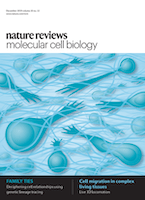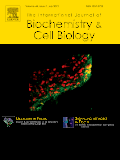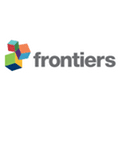
Purinergic Signalling
Scope & Guideline
Exploring the Frontiers of Purinergic Research
Introduction
Aims and Scopes
- Purinergic Signaling Mechanisms:
Exploration of the biochemical pathways and molecular mechanisms involving purines, including ATP and adenosine, in cellular communication and signaling. - Role in Disease Pathology:
Investigation into how purinergic signaling contributes to the pathophysiology of various diseases, including cancer, neurodegenerative diseases, cardiovascular conditions, and inflammation. - Therapeutic Applications:
Research on potential therapeutic approaches targeting purinergic receptors and signaling pathways for the treatment of diseases such as cancer, pain, and inflammatory disorders. - Neuropharmacology:
Studies on the effects of purines on the nervous system, including their roles in neuroprotection, synaptic transmission, and neuroinflammation. - Cellular and Molecular Biology:
Research focusing on the cellular mechanisms of purinergic signaling, including receptor expression, signal transduction, and interactions with other signaling pathways.
Trending and Emerging
- Purinergic Signaling in Cancer:
A growing body of research is investigating the roles of purinergic receptors, especially P2X and P2Y families, in tumor progression, metastasis, and the immune response in cancer. - Neuroinflammation and Neurodegeneration:
There is an emerging focus on the role of purinergic signaling in neuroinflammatory processes and neurodegenerative diseases, highlighting its potential as a therapeutic target. - Electroacupuncture and Pain Management:
Recent studies are increasingly exploring the role of purinergic signaling in the mechanisms of acupuncture analgesia, positioning it as a promising area for pain management research. - Microglial Function and Purinergic Modulation:
Research on microglial cells and their purinergic signaling pathways is trending, emphasizing their role in neuroinflammation and brain health. - Machine Learning in Purinergic Research:
The application of machine learning techniques to identify novel ligands and predict receptor interactions is an emerging trend, indicating a shift towards more computational approaches in purinergic research.
Declining or Waning
- Historical Perspectives on Purinergic Research:
Papers focusing on historical reviews or tributes to foundational figures in purinergic research have decreased, suggesting a shift towards more contemporary applications and findings. - Basic Science without Clinical Relevance:
There is a noticeable reduction in publications that are strictly focused on basic science without clear clinical implications, as the journal appears to be prioritizing studies with direct therapeutic relevance. - Purinergic Mechanisms in Non-Mammalian Models:
Research on purinergic signaling in non-mammalian systems has become less frequent, indicating a possible shift towards mammalian models that are more relevant to human health and disease.
Similar Journals

NATURE REVIEWS MOLECULAR CELL BIOLOGY
Connecting research and application in the life sciences.NATURE REVIEWS MOLECULAR CELL BIOLOGY, published by NATURE PORTFOLIO, stands as a seminal journal in the fields of cell and molecular biology, with a significant impact factor that underscores its influence and reputation within the scientific community. Established in 2000 and continuing its legacy into 2024, this journal delivers comprehensive reviews that synthesize current knowledge and advancements in molecular and cellular processes. Respected for its high-quality articles, it has maintained a prestigious Q1 ranking in both Cell Biology and Molecular Biology categories as of 2023. With an exceptional Scopus ranking, taking the top position in its category, it attracts a readership of prominent researchers, professionals, and students eager to stay abreast of groundbreaking discoveries and methodologies. Although it does not offer Open Access, subscribers benefit from exclusive access to vital insights that foster innovative research approaches and advancements in the life sciences. The journal’s objective is to bridge the gap between research and application, providing indispensable resources to its audience while contributing to the global conversation on molecular and cellular biology.

BMC Molecular and Cell Biology
Illuminating the pathways of modern biological research.BMC Molecular and Cell Biology is a forward-thinking open-access journal published by BMC, specializing in the vital fields of molecular biology and cell biology. Since its inception in 2019, the journal has carved a niche for itself, ranking in the Q3 quartile in both Cell Biology and Molecular Biology categories as of 2023. With an ISSN of N/A and an E-ISSN of 2661-8850, the journal provides a platform for groundbreaking research, high-quality reviews, and innovative methodologies. Situated in the United Kingdom, BMC Molecular and Cell Biology promotes a diverse range of studies, addressing fundamental questions in biology that resonate with both experts and new researchers alike. The journal's commitment to open access ensures that valuable findings are readily available to the global scientific community, fostering collaboration and knowledge-sharing across disciplines. Researchers aiming to contribute to the field of cell and molecular biology will find this journal an indispensable resource for both publishing and staying informed on the latest advances.

CELLULAR PHYSIOLOGY AND BIOCHEMISTRY
Showcasing Breakthroughs in Cellular PhysiologyCellular Physiology and Biochemistry is a premier Open Access journal published by the prestigious Cell Physiol Biochem Press GmbH & Co, dedicated to advancing research in the fields of physiology, biochemistry, and molecular biology. Since its inception in 1987 and transitioning to an Open Access model in 2013, the journal has established itself as a vital resource for the dissemination of high-quality research and reviews, showcasing innovative methodologies and groundbreaking findings in cellular processes. With an impressive ranking in the 2023 Scopus category as Q2 in Physiology and a robust percentile of 61, Cellular Physiology and Biochemistry is committed to fostering academic dialogue among researchers, professionals, and students alike. This journal not only provides unrestricted access to its articles, but also promotes the global sharing of knowledge, which is essential for the advancement of our understanding in these vital scientific areas. The journal's editorial team is dedicated to ensuring the highest standards of academic rigor and relevance, making it an indispensable addition to the libraries of those engaged in the life sciences.

Cell and Bioscience
Empowering Knowledge Sharing in Molecular BiologyCell and Bioscience is a prestigious open-access journal published by BMC that has been at the forefront of biochemistry, genetics, and molecular biology since its inception in 2011. With an impressive impact factor, this journal has established itself as a vital resource for researchers and professionals in these rapidly advancing fields, reflecting its high ranking of #29 out of 221 in the Scopus classification and placing it in the 87th percentile. Based in the United Kingdom, Cell and Bioscience aims to foster innovation and dissemination of research findings addressing critical biological questions through rigorous peer-reviewed articles and inter-disciplinary approaches. The journal's open-access model ensures unrestricted access to transformative research, promoting collaboration and knowledge sharing among academics, students, and practitioners worldwide. With a commitment to maintaining excellence in the field, Cell and Bioscience provides an essential platform for those looking to contribute to the evolving landscape of biosciences.

CELLULAR & MOLECULAR BIOLOGY LETTERS
Pioneering Research in Biochemistry and Cell BiologyCELLULAR & MOLECULAR BIOLOGY LETTERS, published by BMC, is a premier open-access journal dedicated to disseminating high-quality research in the fields of Biochemistry, Cell Biology, and Molecular Biology. Established in 1996, the journal has emerged as a leader in its domain, boasting an impressive Q1 ranking across three critical categories as of 2023, reflecting its significant impact within the scientific community. With an ISSN of 1425-8153 and an E-ISSN of 1689-1392, it offers accessible research findings to a global audience, having been open access since 2013. Situated in the United Kingdom, at CAMPUS, 4 CRINAN ST, LONDON N1 9XW, the journal continues to serve as a vital resource for researchers, professionals, and students, contributing to advancements in the understanding of cellular and molecular processes. By providing a platform for original research, reviews, and short communications, CELLULAR & MOLECULAR BIOLOGY LETTERS plays a crucial role in fostering dialogue and collaboration within the scientific community.

CELLULAR AND MOLECULAR LIFE SCIENCES
Pioneering Innovative Insights in Molecular BiologyCELLULAR AND MOLECULAR LIFE SCIENCES, published by SPRINGER BASEL AG, stands as a premier journal dedicated to advancing the field of cellular and molecular biology. With an impressive 2023 impact factor reflected in its Q1 rankings across key categories—including Cell Biology, Molecular Biology, and Pharmacology—it serves as a critical platform for researchers aiming to disseminate high-quality findings in these dynamic fields. Operated under an open access framework, the journal allows broader accessibility to groundbreaking research, fostering collaboration amongst scientists globally. Based in Switzerland, CELLULAR AND MOLECULAR LIFE SCIENCES has been at the forefront of scientific publishing since 1952, adapting to contemporary scientific challenges and trends, ultimately shaping the future of life sciences.

ACTA NEUROBIOLOGIAE EXPERIMENTALIS
Pioneering Insights in Experimental BiologyACTA NEUROBIOLOGIAE EXPERIMENTALIS, an esteemed journal published by the Nencki Institute of Experimental Biology in Poland, has been a pivotal platform for the dissemination of research in the fields of medicine and neuroscience since its inception in 1970. With an ISSN of 0065-1400 and an E-ISSN of 1689-0035, this journal has consistently aimed to contribute to the understanding of neurobiological phenomena, cementing its status within the academic community. Despite its current categorization in the Q3 and Q4 quartiles for Medicine and Neuroscience respectively, ACTA NEUROBIOLOGIAE EXPERIMENTALIS continues to uphold rigorous scientific standards, providing an invaluable resource for researchers, professionals, and students alike. As an essential scholarly outlet, it encourages the exploration of groundbreaking findings and clinical applications in neurobiology, making it an attractive choice for those eager to advance their understanding of this intricate field.

INTERNATIONAL JOURNAL OF BIOCHEMISTRY & CELL BIOLOGY
Fostering Knowledge in Biochemistry and Cellular BiologyThe International Journal of Biochemistry & Cell Biology, published by Pergamon-Elsevier Science Ltd, stands as a pivotal resource in the fields of biochemistry and cell biology. With an ISSN of 1357-2725 and an E-ISSN of 1878-5875, this prestigious journal has been a key platform for disseminating cutting-edge research since its inception in 1995. The journal currently holds an impressive Q1 ranking in Biochemistry and a Q2 ranking in Cell Biology for the year 2023, reflecting its commitment to high-quality research and its influence within the scientific community. With a significant Scopus ranking of 94/438 in Biochemistry and 96/285 in Cell Biology, the journal plays a crucial role in advancing knowledge and fostering innovative approaches in these dynamic fields. Though it is not an open-access journal, the International Journal of Biochemistry & Cell Biology remains accessible to a wide audience, making it a vital resource for researchers, professionals, and students alike, who are eager to explore and contribute to the ongoing advancements in biochemistry and cell biology.

Frontiers in Molecular Neuroscience
Fostering scholarly discourse in the realm of molecular neuroscience.Frontiers in Molecular Neuroscience, published by FRONTIERS MEDIA SA, is an esteemed open-access journal dedicated to advancing our understanding of the molecular mechanisms underlying neurological functions and disorders. Since its inception in 2008, the journal has established itself as a reputable source of cutting-edge research, earning a respectable Q2 ranking in both the fields of Cellular and Molecular Neuroscience and Molecular Biology as of 2023. With an ongoing commitment to fostering innovation, the journal presents a platform for researchers, professionals, and students to disseminate their findings and engage in scholarly discourse. The E-ISSN 1662-5099 ensures that research is readily accessible, facilitating the exchange of knowledge crucial to tackling the complexities of neurological conditions. Situated in Switzerland, the journal’s global reach is augmented by its open-access model, allowing for wide dissemination of critical research findings to a diverse audience. Join the vibrant community of scientists and practitioners who are shaping the future of molecular neuroscience through their contributions to this dynamic journal.

CELLULAR AND MOLECULAR BIOLOGY
Unveiling the Secrets of Biochemical ProcessesCellular and Molecular Biology is a prominent academic journal published by C M B ASSOC, specializing in the dynamic fields of cellular and molecular biology. Established in 1977, this journal has consistently aimed to disseminate groundbreaking research that contributes to our understanding of biochemical processes, cell dynamics, and molecular mechanisms governing life. With its ISSN 0145-5680 and E-ISSN 1165-158X, the journal plays a vital role in the exchange of innovative ideas, evidenced by its coverage of research from 1977 to 2024. Although currently categorized in the Q4 quartile for major disciplines such as Biochemistry and Cell Biology, it is dedicated to fostering the development of the field by welcoming submissions that challenge the conventional understanding and lead to novel insights. Researchers and academics looking to contribute to or stay updated in the rapidly evolving landscape of molecular biology will find this journal a valuable resource for connecting with a global community of scientists.